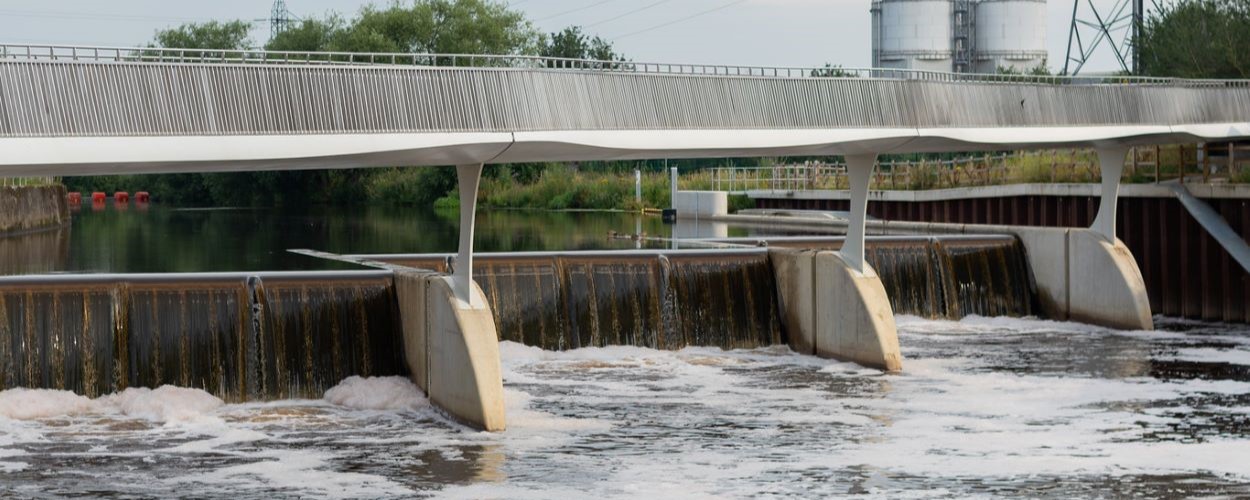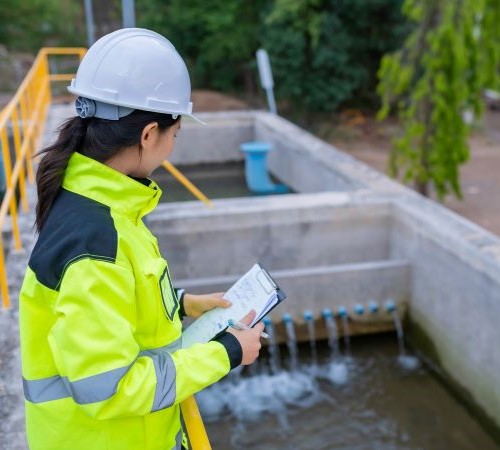
Credit: Sergey Mironov, Getty images.
Key findings of the report
This report examines the interventions available to reduce the public health risks associated with using open waters for recreation that may be polluted with faecal organisms from human waste in sewage.
It outlines 15 recommendations for water service providers, UK government, devolved administrations and public bodies to reduce public health risks posed by polluted water. The report’s findings are based on risk-based assessments and consultations with more than 100 engineers, wastewater experts, the water industry, campaign organisations and policymakers.
It focuses on the role of wastewater infrastructure in introducing primarily human faecal organisms into open water through storm overflows and treated wastewater. However, it does not look at agricultural runoff from livestock, wild animals, or septic tanks.
What engineering interventions could we implement to tackle wastewater pollution?
There are a range of interventions that could be deployed across the wastewater system to reduce the public health risks for recreational water users (such as swimmers, anglers and surfers). The report looks at interventions in four broad categories:
- Water management: These interventions seek to reduce the volume of water entering combined sewers to reduce the number of overflows and reduce exposure to polluted water.
- Wastewater treatment: Improving the quality of pathogen removal to reduce the hazard of treated effluent or overflows.
- Monitoring and communicating risk to the public: Reducing exposure by providing better information to the public.
- Maintenance and operations: Improving performance of infrastructure to reduce the number of overflows and improve the quality of treatment.
Recommendations to reduce public health risk
The report makes 15 recommendations which target situations where the risk to public health is highest whilst also balancing cost and other policy priorities. The recommendations can be split between three groups; immediate actions, long-term transformational opportunities, and enabling actions.
- Asset maintenance.
- Environmental monitoring.
- Bathing water review.
- Overflow management.
- Runoff reduction.
- Collaborative modelling.
- Public engagement.
- Disinfection assessment.
- Visionary strategy.
- Sustainable drainage.
- Water efficiency strategy.
- Innovative treatment funding.
- Research investment.
- Skill development.
- Wastewater champion.

What is our current wastewater system in the UK?
Any interventions made to the wastewater system to reduce public health risks must consider the context of existing infrastructure and working practices. The recommendations made in the report consider the design and workings of the sewerage system, the wastewater treatment process, the effect they have on faecal organisms, and the governance of the system.
Sewers and drainage
Our sewerage system’s primary role is to remove human excreta and other domestic and industrial wastewaters from properties to protect public health. Sewers collect and convey wastewater to wastewater treatment works where pollutants are removed to protect water quality before the water is returned to a natural body of water.
Sewage treatment
There are around 9,000 wastewater treatment works in the UK. The treatment processes that are deployed depend on the size of the works as well as factors such as the contents of the wastewater, the sensitivities of the catchment that treated effluent is discharged into, and how that catchment is used. Broadly the process is the same across most sewage treatment plants with a primary step to remove large solids and a secondary step involving biological treatment to remove more organic matter.
System governance
Policy oversight for management of the water and sewerage system is devolved across UK administrations. Government sets the policy framework and then national legislation for water and sewerage services is set by the devolved administrations. Dedicated regulators then set standards, targets, and grant permits for key areas of operation and governance.
What happens next?
It is important that collective action by industry, government, and public bodies is taken to improve the UK wastewater system. This report calls for an evidence-led, risk-based approach to reducing public health risks of both overflows and continuous effluent discharges.
Work is already being done to improve the wastewater system and generally reduce overflows, including funding for sustainable drainage, increasing storage, and rolling out UV disinfection. However, this activity needs to be guided by an ambitious vision of our future wastewater system.
This vision should underpin regulatory instruments, technical standards, and policy targets across the UK, so that together governments, regulators, and water service providers can effectively mitigate the public health risks and provide safe open waters for everyone to use.

Contact us
For further information about this project, or to share evidence on the issue of wastewater and public health, please contact the Royal Academy of Engineering team: [email protected].
Acknowledgements
The report has been developed by the Royal Academy of Engineering in partnership with the Chartered Institution of Water and Environmental Management, Institute of Water, Institution of Civil Engineers, Institution of Chemical Engineers and Institution of Mechanical Engineers, under the National Engineering Policy Centre (NEPC).
Additional information about the National Engineering Policy Centre Working Group can be found at the end of the full report.





Related policy work
New report urges upgrades in wastewater infrastructure to protect public health
First report to assess how to mitigate public health risks of recreational use of open water contaminated by human faec…
Wastewater and public health
Considering engineering interventions to mitigate the public health risks posed by wastewater pollution of rivers, in-l…
Infection resilient environments
The use of engineering controls in the built environment and public transport to minimise the risk of the transmission…
Health
How engineering can improve public health, from pandemic response to improving healthcare systems.
